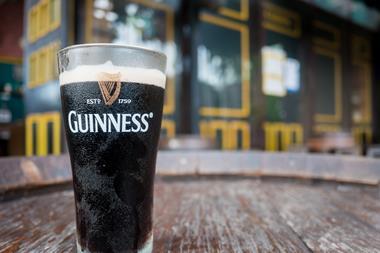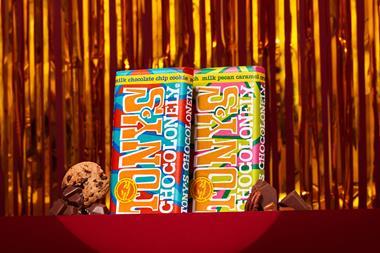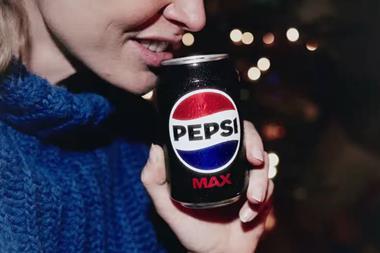Spirits is proving a fickle category, with the latest trends in cocktails driving sales of gins and liqueurs but leaving old-fashioned drinks out in the cold, says Graham Holter
Spirits are like clothing both are subject to the vagaries of fashion.
At the moment, it's gins, liqueurs, speciality spirits and rums that are the maxi-dresses, shearling gilets, Chanel clogs and camel sweaters of the spirits catwalk, according to the latest Kantar Worldpanel data. Vodka, brandy and malt whisky, on the other hand, bear a strong whiff of seasons past shunned by the drinking cognoscenti in much the same way as teale, playsuits or animal print T-shirts are by fashionistas.
In some cases anyway. As with clothes, it's all about the names. The top 10 brands are generally in high spirits, even in otherwise underperforming sub-categories witness Smirnoff Red Label's sales. Own label, however, is really struggling in many sub-categories as drinking moves from the on-trade to the off-trade and consumers trade up.
And one top 10 brand - The Famous Grouse - is in the doldrums despite a rise in sub-category sales. So are we really witnessing the a significant change in drinking behaviour?
The picture is not as clear cut as it initially looks. The recession-driven shift to entertaining at home coupled with current mixology trends are undoubtedly boosting off-trade sales of some spirits, notably gin. But so are promotions, NPD and quirky marketing strategies.
Gin, in particular, has shown how powerful these tools can be. Leading brand Gordon's has benefited from the Diageo tie-up with Coca Cola Enterprises, which offered a discount to consumers buying Gordon's and Schweppes tonic water together. While smaller brands such as Hendrick's have used experiential marketing to produce a dramatic increase in sales.
The fortunes of brands in the biggest off-trade category, blended whisky, have been more mixed. "It is misleading to talk about what is driving the category as a whole," believes First Drinks marketing controller Nick Williamson. "We should look at individual brands. Current growth is largely influenced by investment. Brands we have heavily invested in over the past few years are witnessing a subsequent uplift in sales."
He cites the example of Grant Family Reserve, which has seen a phenomenal 61.9% value rise on volumes up 64% over the past year [Nielsen], thanks to extensive advertising and a packaging overhaul by branding agency LFH, which has increased the whisky's differentiation from other brands and its shelf standout.
It hasn't been the only success story in blended whisky. Bell's widened the gap between itself and The Famous Grouse with the help of its Spirit of Arthur Bell TV ads and Diageo tie-up with Coca-Cola Enterprises, while High Commissioner's low price proposition enabled it to post a 24.4% sales uplift in value sales.
But this growth has come at the expense of own-label blended whisky, which has fallen 28.3% in volume and 22.2% in value to £165m [Nielsen] as consumers have dropped out of the category or switched to brands. Rising own-label prices have been partly to blame for this shift, consumers taking the view that they may as well spend fractionally more on a name despite the fact that these too have experienced duty-driven price rises.
Fewer people are shopping the sub-category, according to Kantar, but they are buying and spending more per trip: the average price paid per litre of blended whisky has risen from £13.94 to £14.76.
And they're drinking it at home. One reason blended whisky volume sales are rising while vodka sales are falling may be that more people buy the former for home consumption while they buy the latter to take to parties something that isn't covered by the Kantar data. Interestingly Nielsen data, which does cover this broader market, suggests vodka volumes are down just 0.9% and that blended whisky sales are down too, by 0.6%.
That said, vodka is not the powerhouse it once was. Smirnoff and Russian Standard are bucking the trend with the help of potent marketing campaigns and NPD, the former launching new flavoured variants supported by a hefty £20m marketing spend and the latter investing £6m in music and film link-ups boosting its sales 54.3% to £29.8m [Nielsen].
But own-label vodka has had a torrid time, falling 4.4% in value and 11.6% in volume [Nielsen] as have some brands, Absolut sales nosediving 39.3% to £17.1m.
Increased competition from gin and rum hasn't helped. Even rosé wine has been blamed for stealing share in recent years. The real sea change has been the change in attitudes, however: cheap is no longer cheerful when it comes to vodka, it seems. Concern about the role played by cheap vodka in binge drinking is being brought to bear, believes Tesco spirits manager Mark Suddaby, and it may have a knock-on effect in other spirits categories.
"Vodka hasn't peaked, but selling it below cost is over therefore there will be an impact on volume," he says. "We have to move away from commoditisation of whisky, gin and vodka. There is a risk people will only take the cheapest route into spirits. For two years retailers have been running a race to the bottom, but we need to get customers thinking beyond cheap alcohol and let them make better choices based on more than a blanket of £10-a-litre spirits."
For this to happen there needs to be a change in promotional tack, he suggests. Diageo grocery channel director Andy Adams admits "part of the growth in the overall category has been driven by promotions, and certainly Diageo brands are a big part of that". He adds: "Promotions are driving £83m of the overall retail sales value within the market. The percentage sold on promotion has increased, and that's a double-edged sword. On the one hand it's driving extra penetration, but clearly we want that growth to be sustainable."
It's not always a case of volume-driven at the expense of value, he insists. Much of Diageo's recent promotional effort has focused on selling its brands in multibuys with Schweppes mixers and although it has increased its overall promotional activity by 7%, this has led to 16% value and volume growth, he claims.
Smirnoff and Baileys flavours have also added value to the category, says Adams. Last June, Smirnoff launched lime and green apple flavoured variants that have generated £5m of sales, and it added blueberry in March this year. Meanwhile, Baileys' coffee variant has seen off-trade sales rise from £1m to £7m, while mint sales have increased from £4m to £5m [Nielsen].
Adams is especially excited about premix cans, which are being backed by an £8m investment this year including heavyweight TV ads. The supposed growth in interest in home-made cocktails has been somewhat overplayed, he believes.
"Cocktails at home feel like a further-off opportunity," he says. "Eighty per cent of people who drink cocktails drink them outside the home. It's a crafted drink and you want someone to craft it for you."
Even if they are inspired by flamboyant mixes in the on-trade, consumers are sticking to simple cocktails at home, agrees Sue Beck, senior brand manager for Halewood International. But consumers can be persuaded to be more adventurous, says Suddaby. "There are a growing number of customers looking for advice on mixology. Our tear-off talkers at shelf edge, with cocktail recipes, are helping to give customers more confidence."
That education in a category crowded by range extensions and NPD, has to be allied to more imaginative communication and that means social media and experiential marketing are essential. "Channels that allow you to feel like you have a more intimate relationship with the brand increases the likelihood of loyalty," says Nick Myers, MD of marketing consultancy JPMH.
Courvoisier, Hendrick's and Malibu are just some of the brands that have been using experiential marketing (The Grocer, 7 August). NPD and marketing in spirits have also been complemented by a renewed enthusiasm from retailers, according to Kantar. With the higher margins that spirits offer, the category has benefited from more prevalent sightings in-store, and spots in the key deals throughout the year, it says.
The vagaries of fashion may be hard to predict, but spirits as a whole look likely to be on-trend for some time yet.
Focus On Spirits
Spirits are like clothing both are subject to the vagaries of fashion.
At the moment, it's gins, liqueurs, speciality spirits and rums that are the maxi-dresses, shearling gilets, Chanel clogs and camel sweaters of the spirits catwalk, according to the latest Kantar Worldpanel data. Vodka, brandy and malt whisky, on the other hand, bear a strong whiff of seasons past shunned by the drinking cognoscenti in much the same way as teale, playsuits or animal print T-shirts are by fashionistas.
In some cases anyway. As with clothes, it's all about the names. The top 10 brands are generally in high spirits, even in otherwise underperforming sub-categories witness Smirnoff Red Label's sales. Own label, however, is really struggling in many sub-categories as drinking moves from the on-trade to the off-trade and consumers trade up.
And one top 10 brand - The Famous Grouse - is in the doldrums despite a rise in sub-category sales. So are we really witnessing the a significant change in drinking behaviour?
The picture is not as clear cut as it initially looks. The recession-driven shift to entertaining at home coupled with current mixology trends are undoubtedly boosting off-trade sales of some spirits, notably gin. But so are promotions, NPD and quirky marketing strategies.
Gin, in particular, has shown how powerful these tools can be. Leading brand Gordon's has benefited from the Diageo tie-up with Coca Cola Enterprises, which offered a discount to consumers buying Gordon's and Schweppes tonic water together. While smaller brands such as Hendrick's have used experiential marketing to produce a dramatic increase in sales.
The fortunes of brands in the biggest off-trade category, blended whisky, have been more mixed. "It is misleading to talk about what is driving the category as a whole," believes First Drinks marketing controller Nick Williamson. "We should look at individual brands. Current growth is largely influenced by investment. Brands we have heavily invested in over the past few years are witnessing a subsequent uplift in sales."
He cites the example of Grant Family Reserve, which has seen a phenomenal 61.9% value rise on volumes up 64% over the past year [Nielsen], thanks to extensive advertising and a packaging overhaul by branding agency LFH, which has increased the whisky's differentiation from other brands and its shelf standout.
It hasn't been the only success story in blended whisky. Bell's widened the gap between itself and The Famous Grouse with the help of its Spirit of Arthur Bell TV ads and Diageo tie-up with Coca-Cola Enterprises, while High Commissioner's low price proposition enabled it to post a 24.4% sales uplift in value sales.
But this growth has come at the expense of own-label blended whisky, which has fallen 28.3% in volume and 22.2% in value to £165m [Nielsen] as consumers have dropped out of the category or switched to brands. Rising own-label prices have been partly to blame for this shift, consumers taking the view that they may as well spend fractionally more on a name despite the fact that these too have experienced duty-driven price rises.
Fewer people are shopping the sub-category, according to Kantar, but they are buying and spending more per trip: the average price paid per litre of blended whisky has risen from £13.94 to £14.76.
And they're drinking it at home. One reason blended whisky volume sales are rising while vodka sales are falling may be that more people buy the former for home consumption while they buy the latter to take to parties something that isn't covered by the Kantar data. Interestingly Nielsen data, which does cover this broader market, suggests vodka volumes are down just 0.9% and that blended whisky sales are down too, by 0.6%.
That said, vodka is not the powerhouse it once was. Smirnoff and Russian Standard are bucking the trend with the help of potent marketing campaigns and NPD, the former launching new flavoured variants supported by a hefty £20m marketing spend and the latter investing £6m in music and film link-ups boosting its sales 54.3% to £29.8m [Nielsen].
But own-label vodka has had a torrid time, falling 4.4% in value and 11.6% in volume [Nielsen] as have some brands, Absolut sales nosediving 39.3% to £17.1m.
Increased competition from gin and rum hasn't helped. Even rosé wine has been blamed for stealing share in recent years. The real sea change has been the change in attitudes, however: cheap is no longer cheerful when it comes to vodka, it seems. Concern about the role played by cheap vodka in binge drinking is being brought to bear, believes Tesco spirits manager Mark Suddaby, and it may have a knock-on effect in other spirits categories.
"Vodka hasn't peaked, but selling it below cost is over therefore there will be an impact on volume," he says. "We have to move away from commoditisation of whisky, gin and vodka. There is a risk people will only take the cheapest route into spirits. For two years retailers have been running a race to the bottom, but we need to get customers thinking beyond cheap alcohol and let them make better choices based on more than a blanket of £10-a-litre spirits."
For this to happen there needs to be a change in promotional tack, he suggests. Diageo grocery channel director Andy Adams admits "part of the growth in the overall category has been driven by promotions, and certainly Diageo brands are a big part of that". He adds: "Promotions are driving £83m of the overall retail sales value within the market. The percentage sold on promotion has increased, and that's a double-edged sword. On the one hand it's driving extra penetration, but clearly we want that growth to be sustainable."
It's not always a case of volume-driven at the expense of value, he insists. Much of Diageo's recent promotional effort has focused on selling its brands in multibuys with Schweppes mixers and although it has increased its overall promotional activity by 7%, this has led to 16% value and volume growth, he claims.
Smirnoff and Baileys flavours have also added value to the category, says Adams. Last June, Smirnoff launched lime and green apple flavoured variants that have generated £5m of sales, and it added blueberry in March this year. Meanwhile, Baileys' coffee variant has seen off-trade sales rise from £1m to £7m, while mint sales have increased from £4m to £5m [Nielsen].
Adams is especially excited about premix cans, which are being backed by an £8m investment this year including heavyweight TV ads. The supposed growth in interest in home-made cocktails has been somewhat overplayed, he believes.
"Cocktails at home feel like a further-off opportunity," he says. "Eighty per cent of people who drink cocktails drink them outside the home. It's a crafted drink and you want someone to craft it for you."
Even if they are inspired by flamboyant mixes in the on-trade, consumers are sticking to simple cocktails at home, agrees Sue Beck, senior brand manager for Halewood International. But consumers can be persuaded to be more adventurous, says Suddaby. "There are a growing number of customers looking for advice on mixology. Our tear-off talkers at shelf edge, with cocktail recipes, are helping to give customers more confidence."
That education in a category crowded by range extensions and NPD, has to be allied to more imaginative communication and that means social media and experiential marketing are essential. "Channels that allow you to feel like you have a more intimate relationship with the brand increases the likelihood of loyalty," says Nick Myers, MD of marketing consultancy JPMH.
Courvoisier, Hendrick's and Malibu are just some of the brands that have been using experiential marketing (The Grocer, 7 August). NPD and marketing in spirits have also been complemented by a renewed enthusiasm from retailers, according to Kantar. With the higher margins that spirits offer, the category has benefited from more prevalent sightings in-store, and spots in the key deals throughout the year, it says.
The vagaries of fashion may be hard to predict, but spirits as a whole look likely to be on-trend for some time yet.
Focus On Spirits



















No comments yet